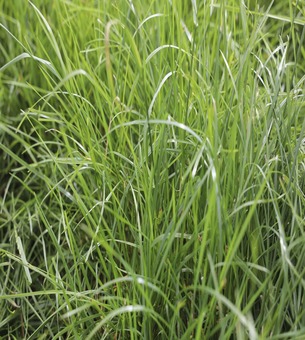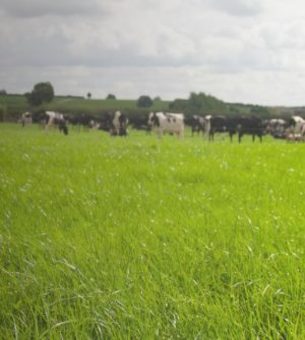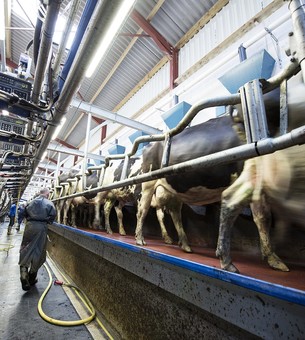Head of Grassland Research at Teagasc Dr Michael O’Donovan looks at the performance of grass varieties in commercial farm settings.
Reseeding of pasture with improved perennial ryegrass grass (PRG) varieties on a regular basis is a crucial part of a successful grassland-based farming system. In order to establish more efficient use of pastures in Ireland improved grass varieties will always be required. Very little data exists on how individual varieties perform on commercial farms. The grassland technology evolution, in the form of PastureBase Ireland (PBI), has given the grassland industry access to previously unavailable data. The objective of the current study was to quantify the commercial farm performance of 10 ‘recommended listed’ PRG varieties over a seven-year period on commercial grassland farms across Ireland. This was a part of a longitudinal study of PRG variety performance on 98 Irish grassland farms from 2013-2019 inclusive.
Commercial farm performance
10 ‘recommended listed’ perennial ryegrass varieties were sown: AberGain (T), AberChoice, Astonenergy (T), Drumbo, Dunluce (T), Glenveagh, Kintyre (T), Majestic, Twymax (T), and Tyrella. All data was recorded by commercial farmers on the PastureBase Ireland software system. Of the 10 varieties, AberGain produced the highest level of grass DM. Grazing yield was significantly affected by variety and year; AberGain had the highest grazing yield with 1,740kg DM/ha more than Glenveagh (see table).
The number of grazing events achieved differed significantly by year and variety. Astonenergy and AberGain recorded the most grazing events (8.0), an average of 0.8 more than the lowest, Dunluce, over the seven-year period. In 2016, the highest number of grazing events was recorded, which was 8.2, 1.3 events more than the lowest total in 2018, a drought year. There was a strong relationship between grazing yield and the number of grazing events achieved (r2 = 0.71), with the extra grazing DM increasing by 1,399kg DM/ha with each additional grazing event achieved. There was a strong correlation between total and grazing DM production.
The results of the study so far show large differences in dry matter production on commercial farms. What’s equally important is that the sown varieties are growing herbage being used for grazing. Ultimately this is the real test of varieties and is reflected through more grazing events from some varieties. It is clear there are large differences between varieties in their commercial farm performance, and much of this is reflected in the Pasture Profit Index differences between varieties. Variety choice should be dictated by the traits required from the paddock being reseeded.
While this type of grassland research on-farm is new, it requires commitment from the participating grassland farmers to complete more than 35 grass covers over the grazing season. The study has now moved to evaluate 25 varieties on-farm in recent years, as varieties become recommended listed or just before listed, they are sown on farms.
Table. Varietal total and grazing production in kg DM/ha and number of grazing events achieved
Variety | Total | Grazing | Grazing Events |
AberChoice | 14,390 | 12,820 | 7.7 |
AberGain(T) | 15,434 | 13,281 | 8.0 |
Astonenergy (T) | 14,224 | 12,899 | 8.0 |
Drumbo | 14,438 | 12,863 | 7.9 |
Dunluce (T) | 13,947 | 11,741 | 7.2 |
Glenveagh | 13,568 | 11,541 | 7.3 |
Kintyre (T) | 13,936 | 12,408 | 7.9 |
Majestic | 14,245 | 12,365 | 7.8 |
Twymax (T) | 14,326 | 12,360 | 7.6 |
Tyrella | 13,752 | 11,946 | 7.5 |
(T) = tetraploid
Dr O’Donovan’s results show the on-farm performance of AberGain and AberChoice reflects their high position on the recommended list. AberGain ranks highest across all varieties for quality and second for total PPI value among late tetraploids. For eight years in succession, AberChoice is the highest-ranking late diploid, with excellent performance across all traits. This gives farmers the confidence to make informed choices when planning a reseed.
Related Content
Plan your reseed now to
maximise grass performance
2021
Pasture Profit Index
Once-a-day milking to
reduce spring labour



